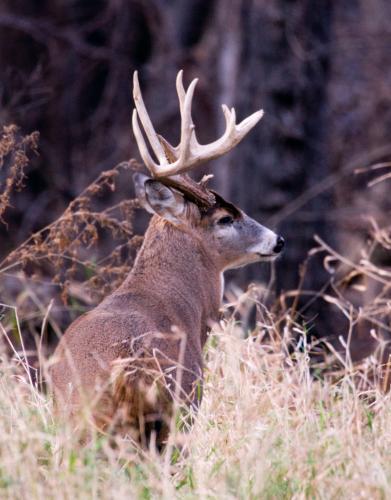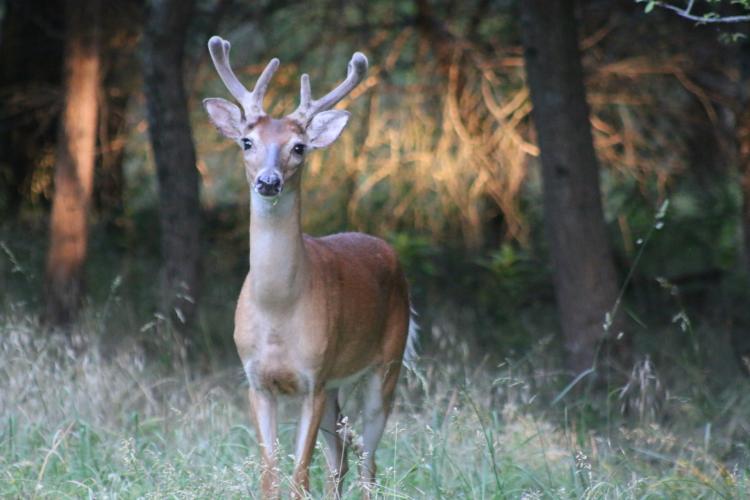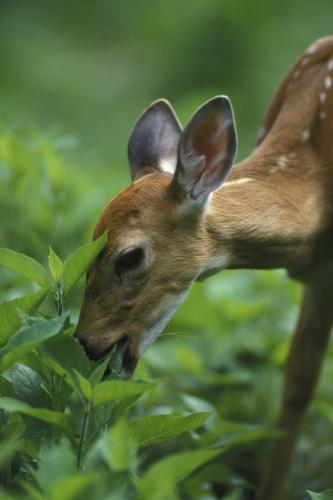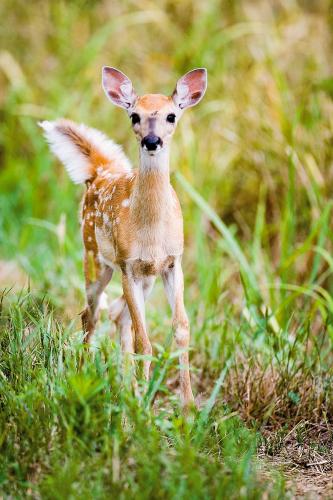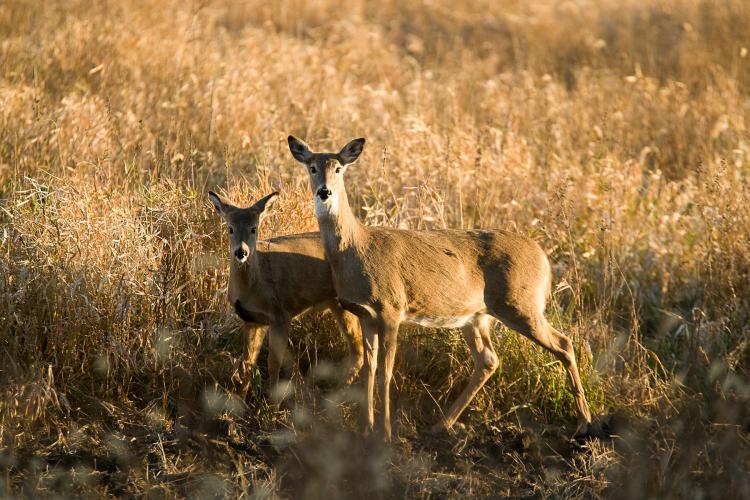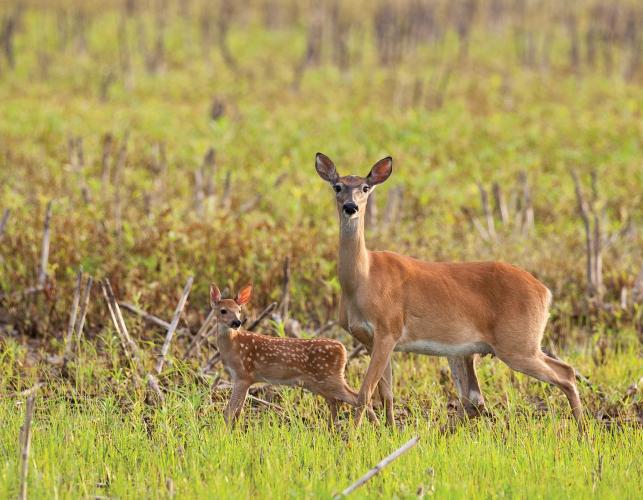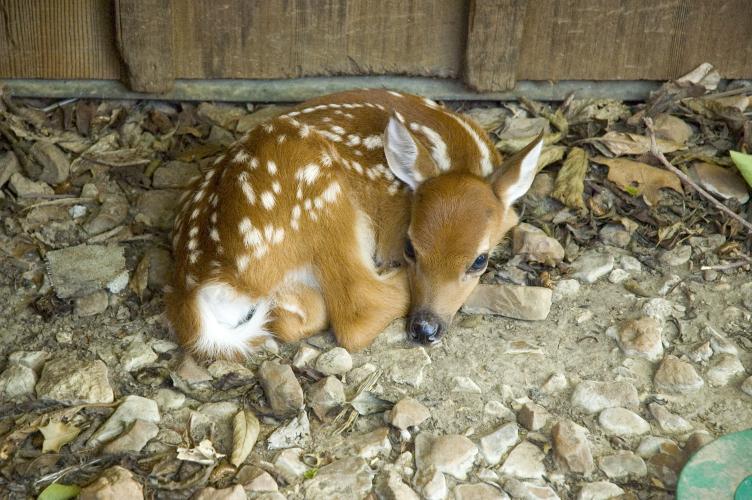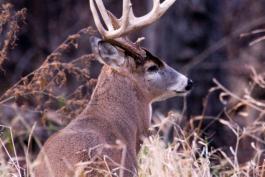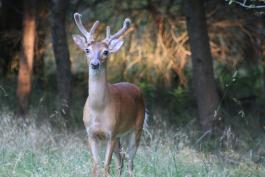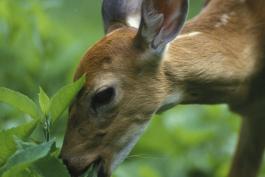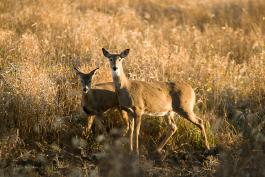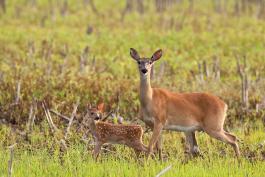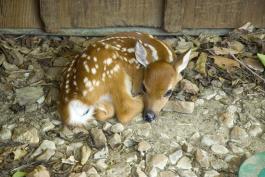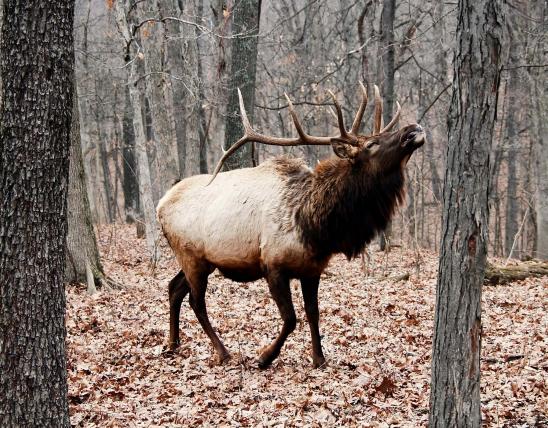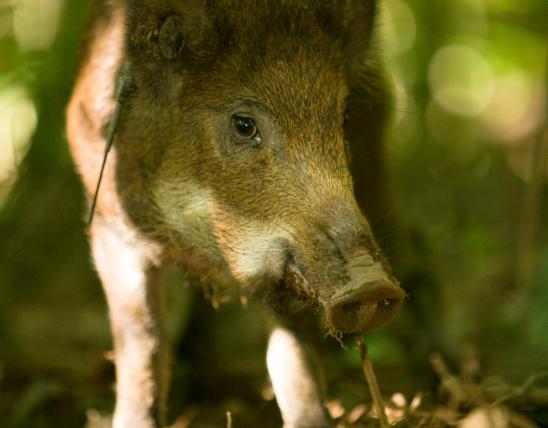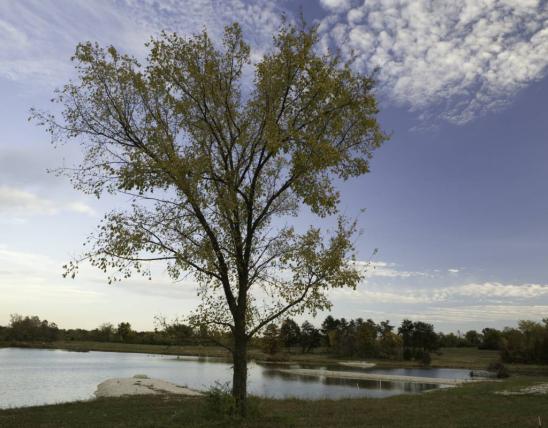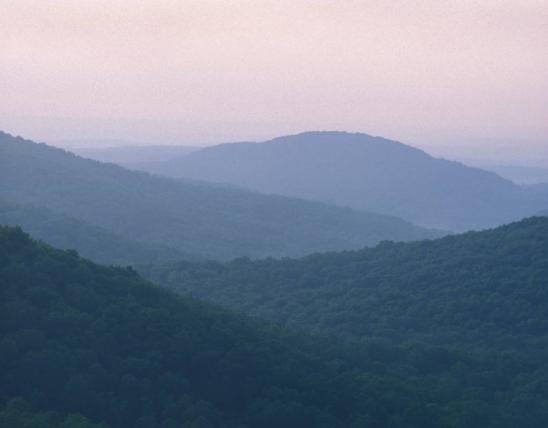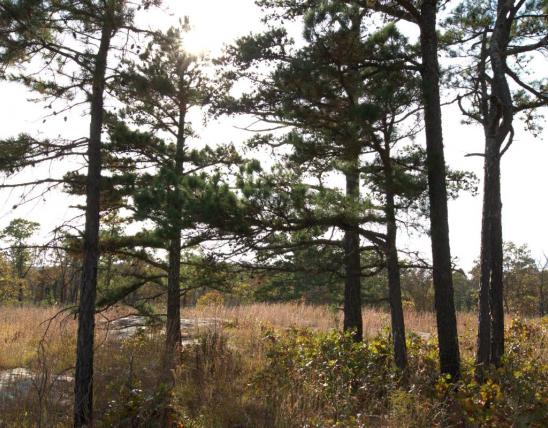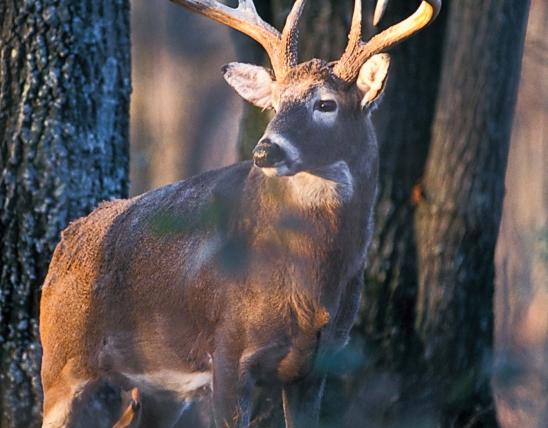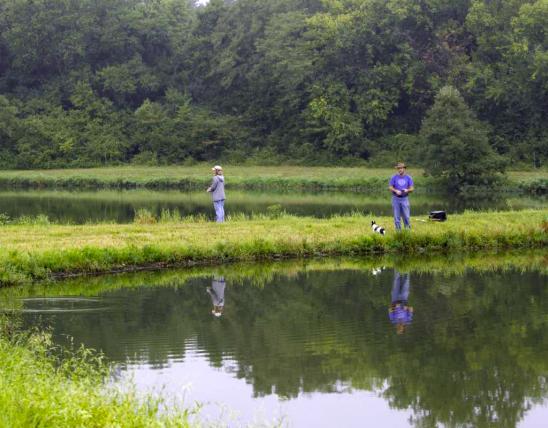
In summer, white-tailed deer are reddish-brown to tan above; the winter the colors are grayish to grayish brown. Fawns are reddish, brown, or reddish-yellow spotted with white; they lose their spots and acquire uniform coloration at 3–5 months of age. Antlers normally occur only in males and are formed and shed each year. Antler growth starts in April or May. During the growth period, the soft skin and short hair covering the antlers have a plush quality, giving this stage the name of "velvet." The white-tailed deer is aptly named because the white undersurface of its flaglike tail is about all that we see in the fleeting glimpse we get as it bounds across an opening in the woods.
Total length: 2½–8 feet; tail length: 4–14 inches; weight: 90–311 pounds.
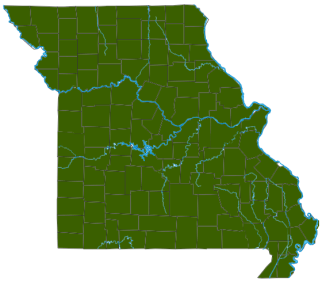
Statewide.
Habitat and Conservation
Deer live in timbered areas, especially at the borders of clearings, where they obtain the variety of foods they like; this includes woodlands adjacent to agricultural crops. The major aspects of deer management in Missouri have been controlling the annual harvest by hunters, transplanting live-trapped deer to stock new ranges, and preventing illegal kills. Some landowners wish to increase the deer population on their property; others wish to exclude deer, which forage on crops and trees.
Food
Deer are browsing animals, eating the leaves, twigs, and fruits of trees and shrubs, and the foliage of herbaceous plants. They also take seeds, fungi, mosses, lichens, succulent grasses, farm crops, and sometimes small amounts of animal food like snails and fish.
Status
Common. A variety of diseases and parasites can affect deer, but the most worrisome disease today is chronic wasting disease (CWD), which was detected in our state in 2010. CWD causes abnormal behavior, loss of body function leading to emaciation, and eventually death. CWD is a slowly progressing syndrome that may take more than a year for clinical signs to appear. During the prolonged period between infection and clinical signs of CWD, infected cervids (deer and elk) excrete infectious materials into the environment via defecation, urination, salivation, and so on, ultimately resulting in transmission of the disease to other cervids. CWD may also be spread directly through the natural movements of infected free-ranging cervids, as well as the interstate movement of infected captive cervids. Indirect transmission may occur through movement of infected carcasses and offal from hunter-harvested cervids and also from contaminated soil and water sources. Once established in a local deer population, CWD will slowly increase in prevalence, causing reduced survival rates leading to long-term population declines.
Life Cycle
The peak of the mating (rutting) season is in November. Most young are born in late May or early June. A doe usually has twins; each weighs 4–7 pounds at birth. The young accompany the female until they are old enough to breed. About half of the young females in Missouri breed in the year of their birth. Other females and young males breed first at 1½ years of age. Deer are in the prime of life between 2½ and 7½ years of age. Deer can live for 15 years in the wild and 25 years in captivity.
Control
Human Connections
Deer were essential to Native Americans and to early settlers, providing food, hides, sinews for bowstrings, bones for tools, and much more. Today deer still provide us considerable food, sport, and pleasure, as hunting is a major industry in this country. Many people enjoy seeing deer.
Ecosystem Connections
As deer nip off buds and branches, they encourage denser growth on the plants they forage on. When deer are overabundant, they can cause serious damage to food-plant populations. Although deer are today chased most commonly by free-running dogs, they also provide food for coyotes and bobcats.
Signs and Tracks
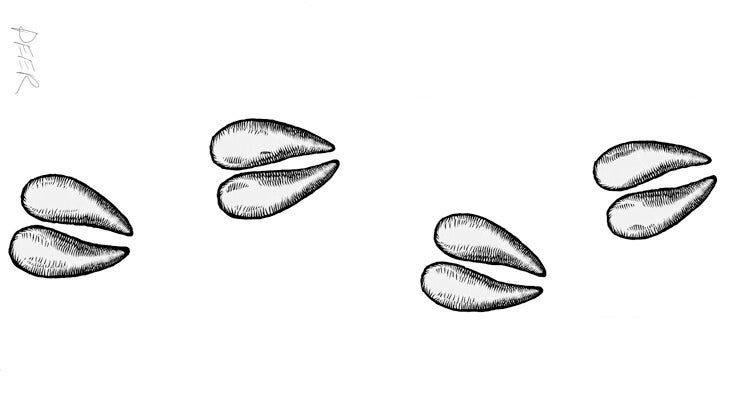
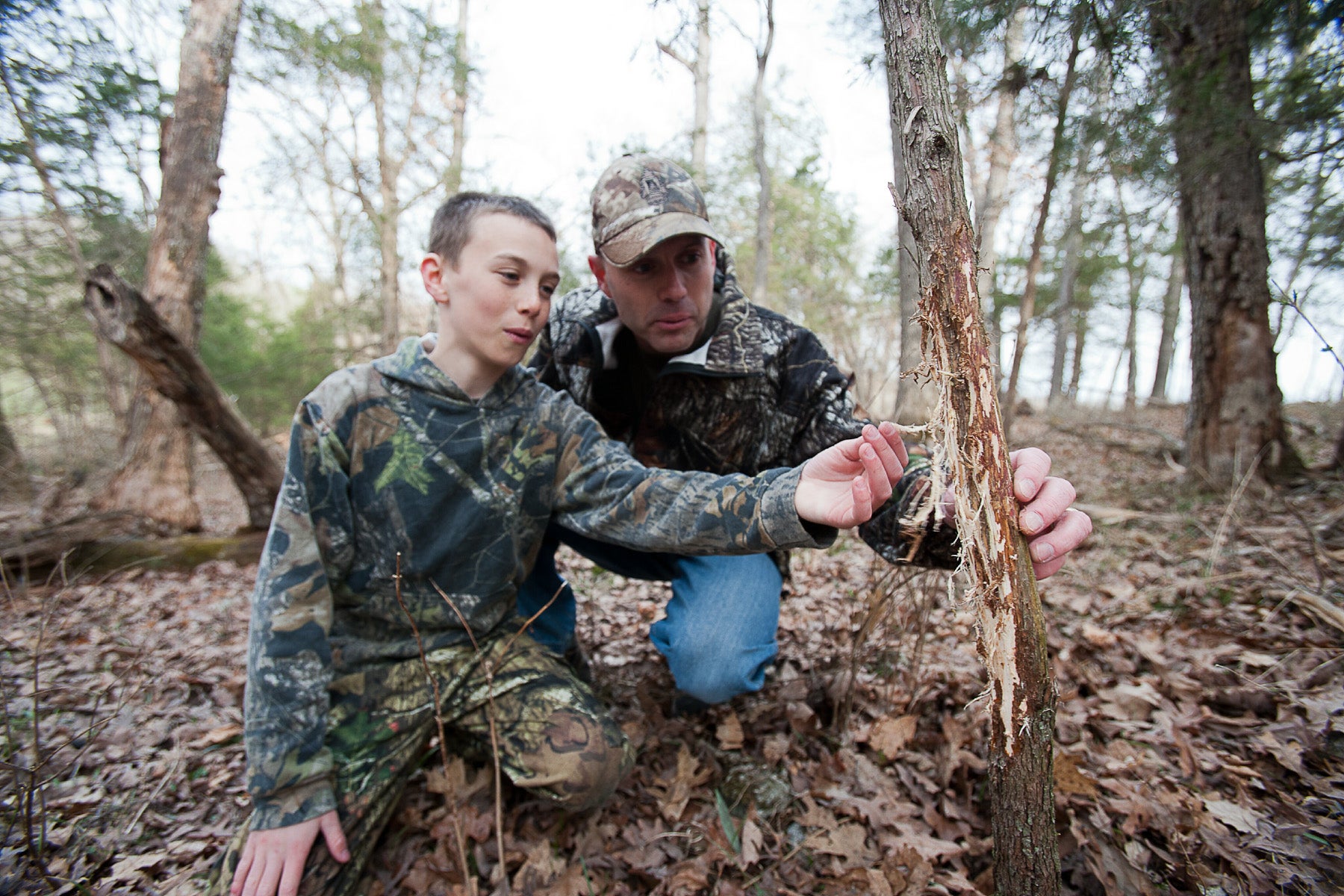
Front and hind tracks:
- 2½–4 inches long
- 2 hooves
- Front track is larger than hind.
Other notes:
- Very common in Missouri.
- Each track is heart-shaped overall (not parallel), with a split down the middle.
- The hooves are pointed.
- The hooves may spread, and two dewclaws may leave dots just behind each track, especially when bounding on mud or snow.
- Distance of stride is about 1 foot (walking); can be 10–15 feet when bounding.
- Although pigs, sheep, and goats also leave split-hoof tracks, only the deer’s tracks are heart-shaped overall and have pointed hooves. Elk tracks are much larger and less pointed.
